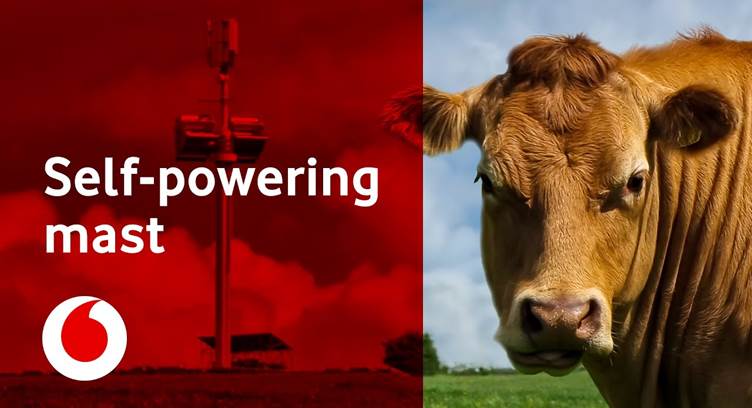Vodafone UK has switched on the UK’s first live wind- and solar-powered mobile phone mast in Pembrokeshire, Wales. The mast will provide 4G coverage to the community of Eglwyswrw.
The specially designed mast, which potentially removes the need for a connection to the national electricity grid, could provide connectivity to ‘not-spots’ in the UK’s most remote and inaccessible locations – helping the industry achieve 95% of UK landmass coverage by 20253 . It will also help Vodafone reduce carbon emissions and support its target of reaching net zero UK operations by 2027.
Vodafone hits renewable milestone in the UK achieving important next step in its 'net zero' ambitions Vodafone today confirmed that every area of its business in the UK – including its network, data centres, retail stores and offices – is now 100% powered by electricity from renewable sources, such as wind, solar and hydro.
The ‘self-powering’ mast incorporates a unique Crossflow Energy wind turbine that can generate power even in light winds. The mast can be installed without the need to dig trenches and lay electricity cables, making it faster and easier to install and reducing the impact on the local environment.
It is also extremely quiet, making it viable for sensitive sites such as Areas of Outstanding Natural Beauty. It can also be ‘filtered out’ as a solid object by radar, birds and bats, so it is easily avoided, making it less harmful to wildlife.
The trial, in partnership with wind turbine technology specialists Crossflow Energy and mobile infrastructure partner Cornerstone, is at Home Farm in the village of Eglwyswrw. It will run for two years and data gathered will help Vodafone optimise the technology and determine which sites are most suitable for ‘self-powering’ masts.
Bringing mobile and internet services to rural communities helps boost the local economy, tackle isolation and close the rural digital divide. To date, building masts in coverage ‘not spots’ without an existing electricity connection has been a significant financial and logistical challenge.
Vodafone UK has committed to reaching net zero UK operations by 2027.
Andrea Dona, Chief Network Officer and Development Director, Vodafone
Connectivity is vital to everyone, no matter where you live. This self-powering mobile phone mast, with on-site battery storage, could help us connect places that were previously impossible to reach. It will also help us reduce carbon emissions and minimise our impact on local environments. If this trial is a success, we would like to roll out more ‘self-powering’ masts, with a focus on areas with poor or no coverage.






















